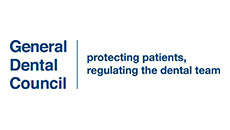Placing Your Implants – The Procedure
Dental implants are artificial tooth roots used to support a restoration for a missing tooth or teeth, helping to stop or prevent jaw bone loss. The implantation procedure is categorized as a form of prosthetic (artificial replacement) dentistry, but also is considered a form of cosmetic dentistry.
People who have lost teeth might feel too self-conscious to smile or talk. Additionally, biting irregularities caused by tooth loss can have a negative effect on eating habits, leading to secondary health problems like malnutrition.
By replacing missing tooth roots, dental implants provide people with the strength and stability required to eat all the foods they love, without struggling to chew. Additionally, they help to stimulate and maintain jaw bone, preventing bone loss and helping to support facial features.
Today’s dental implant restorations are virtually indistinguishable from other teeth. This appearance is aided in part by the structural and functional connection between the implant and the living bone. The procedure is typically performed in a single sitting but requires a period of osseointegration.
Osseointegration is the process by which the implant anchors to the jaw bone. An osseointegrated implant takes anywhere from three to six months to anchor and heal, at which point your dentist can complete the procedure by placing a crown restoration. If osseointegration does not occur, the implant will fail.
Dental implantation, which is performed to replace missing teeth, can be done any time after adolescence or when bone growth is complete. Certain medical conditions, such as active diabetes, cancer or periodontal disease, may require additional treatment before the procedure can be performed.
Detailed procedural steps
Preparing the Jaw for Implantation: A dental implant restoration is commonly composed of a titanium material screw and a crown. A small-diameter hole (pilot hole) is drilled at edentulous (where there is no tooth) jaw sites in order to guide the titanium screw that holds an implant in place. To avoid damaging vital jaw and face structures like the inferior alveolar nerve in the mandible (lower jaw), a dentist must use great skill and expertise when boring the pilot hole and sizing the jaw bone. In many instances dentists use surgical guides created based on the CT scans when placing the implants.
Placement: After the initial pilot hole has been drilled into the appropriate jaw site, it is slowly widened to allow placement of the implant screw. Once in place, surrounding gum tissue is secured over the implant and a protective cover screw is placed on top to allow the site to heal and osseointegration to occur. After up to six months of healing, your dentist will uncover the implant and attach an abutment (which holds the crown or tooth-like replacement). In some cases, the abutment may be attached during the initial procedure. When the abutment is in place, your dentist then will create a temporary crown. The temporary crown serves as a template around which the gum grows and shapes itself in a natural way. The process is completed when the temporary crown is replaced with a permanent crown.
Recovery, Follow-up & Aftercare
Dental implant recovery depends on a number of factors, one of which includes the various procedures required to complete your treatment. However, it is generally recognized that once an implant has been placed, maintaining diligent oral hygiene habits is required to ensure proper fusing with bone structure. Failure to floss and brush is a leading cause of failure, and infection can occur if the implant and surrounding areas are not cleaned properly. Smoking also is attributed to high failure rates and should be avoided following implant procedures.
If provisional restorations were placed along with the implant(s), it will be important to clean them as you would your natural teeth to ensure the best possible healing and fusing.
After the initial surgical procedure, discomfort should be minimal. Swelling of your gums and face may occur, as well as minor bleeding and bruising of the implant site. Prescription pain medications may be prescribed by your dentist to relieve any pain or discomfort you feel after the procedure. For five to seven days after surgery, your diet should be restricted to soft foods. If stitches are present, they may need to be removed by your dentist; however, self-dissolving stitches that do not require removal are typically used.
Healing from the surgical procedure to place the implant(s) takes up to six months, while the fitting and seating of the crown(s) can take up to two months. Again, this timeframe depends on individual cases and treatments. Follow-up appointments with your treatment coordinators are essential for monitoring your progress.
If cared for properly, it can remain in place for more than 40 years.
Types of Dental Implants
More than 60 companies manufacturer dental implants and/or the materials used to create the restorations placed on top of them. As a result, dentists have many options for identifying the right treatment for specific patient needs. However, be aware that if you undergo an implant procedure by one dentist, then see a different dentist for a repair, your new dentist may have limited experience with, or may not have access to, the material components used by the previous dentist.
Dental implants usually are categorized based on the type of procedure used to place them: two-stage or single stage.
Two-Stage Implants: A two-stage procedure involves surgery to place the implant into the jaw bone and close (stitch) the gum tissue. Several months after healing, a minor surgery is performed to attach an abutment and temporary restoration.
Endosteal (Endosseous) Implants: Placed in the jaw bone, endosteals are the most commonly used type for two-stage implant procedures. Placed primarily as an alternative to a bridge or removable denture, endosteal implants include screw types (threaded), cylinder types (smooth) or bladed types.
Single-Stage Dental Implants: A single-stage procedure involves surgically placing a longer implant into the jaw so it is on the jaw bone, with the top level with the gum tissue, after which the gum tissue is closed (stitched), leaving the implant head visible. As a result, after several months of healing, the abutment and temporary restoration can be attached without the need for minor surgery to expose the head.
Subperiosteal Implants: Placed on the jaw bone within the gum tissue, with the metal implant post exposed to hold the restoration, subperiosteals are the most commonly used type for single-stage dental implant procedures. Subperiosteals are primarily used to hold dentures in place in patients with insufficient bone height.
Coatings, Connectors & Sizes
Coatings
Although most dental implants are made of titanium, the surface — which affects the long-term integration and stability of treatment — can vary. A porous surface contributes to more bone contact than a machined titanium surface. Other surfaces include a grit-blasted or acid-etched and roughened surface, a microgrooved or plasma-sprayed titanium surface, and a plasma-sprayed hydroxyapatite coating.
Connectors
Implants also may be categorized based on the shape/type of their head. All implants require the restoration and abutment to be attached or screwed to the head. For this purpose, there are three main connector types:
Internal Hex Connectors: Shaped like a hexagon, an internal hex connector is an opening in the implant head into which the restoration/abutment is screwed.
External Hex Connectors: Also shaped like a hexagon, these connectors are atop the implant head.
Internal Octagon Connectors: Shaped like an octagon, an internal octagon connector has an opening in the implant head into which the restoration/abutment is screwed.
Implant Sizes
Another way to categorize implants is based on their size (also called platform), which dictates where they generally can be placed in the mouth. However, every case is different, and individual spacing and bone availability needs may dictate the use of a different size.
Standard Platform: Standard dental implants range in size from 3.5 mm to 4.2 mm in diameter. These comparatively shorter and narrower implants are most commonly placed toward the front of the mouth.
Wide Platform: Wide platform dental implants range in size from 4.5 mm to 6 mm in diameter and are placed primarily in the back of the mouth.
Mini or Narrow Body: Mini or narrow body dental implants range in size from 2 mm to 3.5 mm in diameter and are placed primarily in patients with insufficient space between their tooth roots to accommodate a larger size. They also may be placed when the patient has insufficient bone density.
Why Choose Us?
Queensway Dental Practice is one of the most highly reputable orthodontic. When a Dentist needs to refer a patient for orthodontics, they know where to send them. We are conveniently located along the main high street with free and easy parking, just a two minute walk from practice. We cater for anxious and nervous patients.
Offer a wide range of NHS and private treatment. Flexible appointment times available exclusively for private patients. We offer emergency appointments. We provide our Denplan and private patients with domiciliary dental care. Infection control is of up most importance at Queensway Dental Practice. All members of our team are fully trained in infection control.
We believe that you have a unique need and desire when it comes to your teeth and oral health, which is why our knowledgeable orthodontic staff and doctors are ready to treat you that way.















